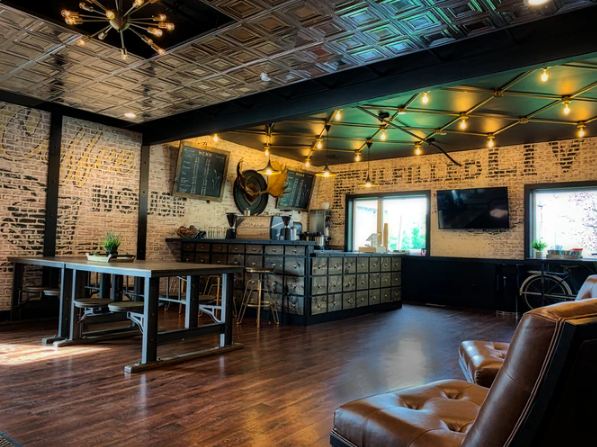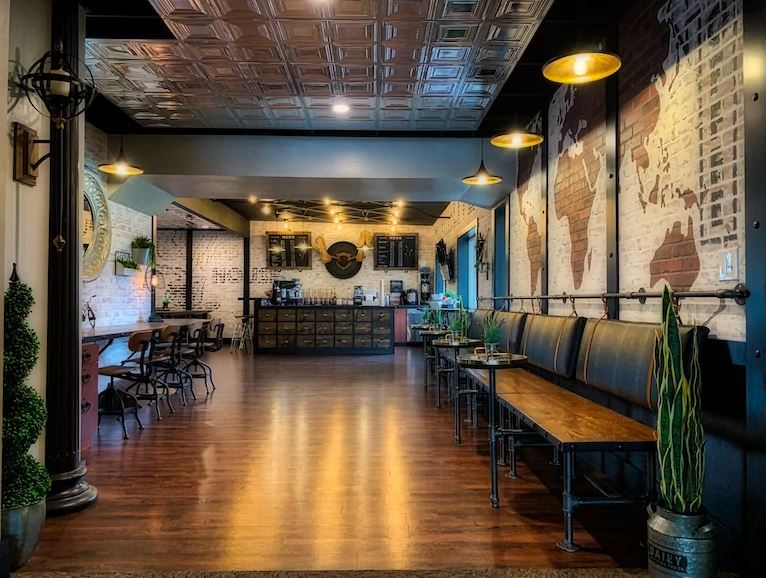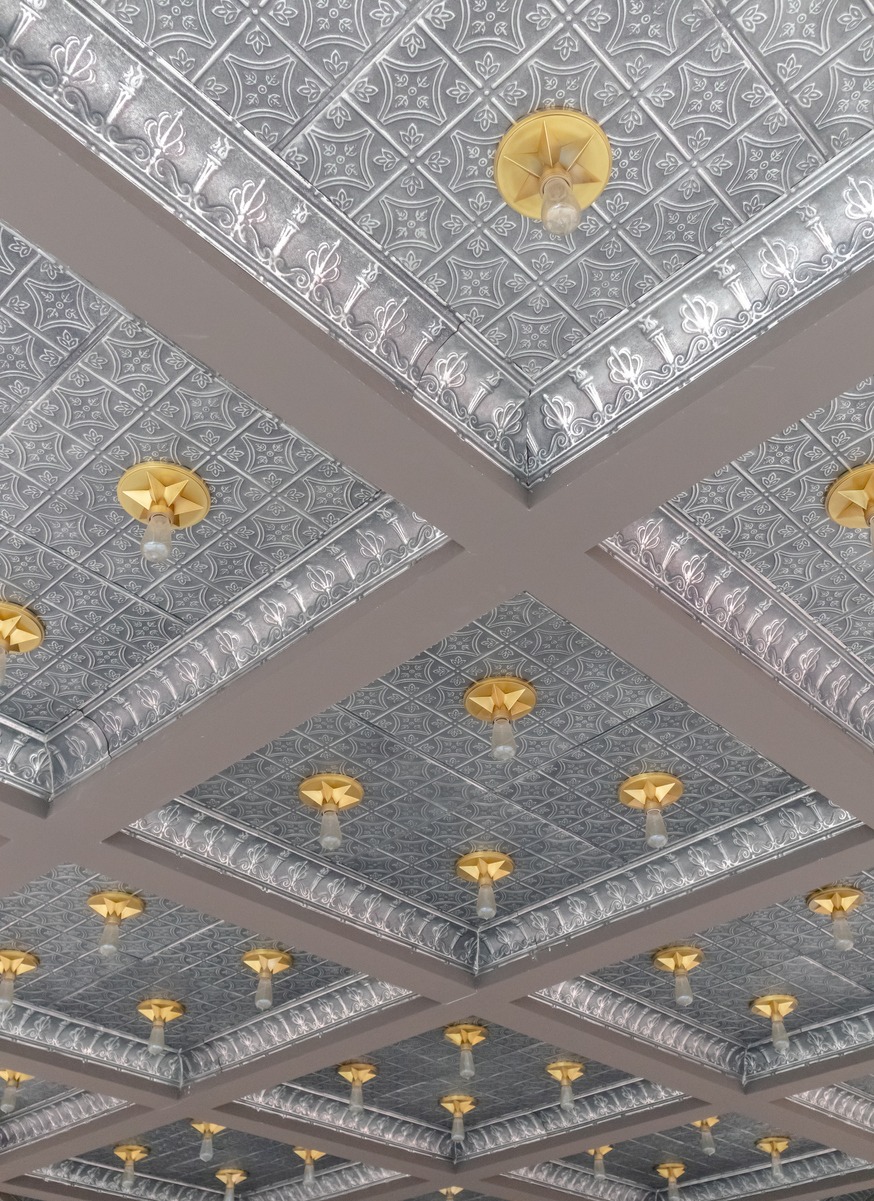For more than a century, tin ceilings have been around, and they still remain a popular design choice at the present time. These decorative panels were once considered a sign of luxury and opulence in buildings like mansions, theaters, and hotels. At the present time, tin ceilings are used as a popular addition to homes and commercial spaces as they can add charm and character to any room.
Tin ceilings can also add a touch of vintage to any room. Taking a closer look at the tiles will give people the impression that it took a long time to carve and maintain them. If you are considering installing a tin ceiling in your home or space, you’ve come to the right place. In this article, we are going to take a closer look at tin ceilings, including their different materials, types, design options, and more. Whether you are considering a tin ceiling for your home or business, this ultimate guide will give you all the information you need to make an informed decision.
What are Tin Ceilings?
Tin ceilings are an architectural element that consists of a ceiling finished with plates of tin. There are also designs pressed into them, and they were very popular in Victorian buildings in North America back in the late 19th and early 20th centuries. This type of ceiling tile is beautifully and carefully crafted by pressing tin pieces in a die to create intricate patterns and mimic the expensive and luxurious plaster ceilings of people living in extravagant, upper-class homes.
Ever since tin ceilings were developed, they have never ceased to impress people from all walks of life. At the present time, homeowners and interior designers are realizing the importance of adding a touch of class to their décor. There are lots of patterns and styles to choose from, and the best one will always depend on the type of design you have at home and the type of aesthetic you are aiming for.
Tin ceilings usually have three components, which are field panels, cornice, and filler. Field panels cover the center of the ceiling, while a cornice mark the transition from ceiling to wall. A filler, on the other hand, creates a rather subtle border around the field panels.
Different Types of Tin Ceilings
Tin ceilings come in four main types, and each of them has its own unique characteristics and installation methods. To learn more about them, below are the different types of tin ceilings:
Embossed Tin Ceilings: These tin ceilings are made by stamping a pattern into the metal using a machine. It results in a raised design that gives the ceiling a three-dimensional look. Embossed tin ceilings are mostly used in homes and buildings that have traditional and Victorian styles.
Pressed Tin Ceilings: Pressed tin ceilings are created by pressing a design into the metal via a hydraulic press. This method results in a flat panel with a detailed design that can be painted or finished in different ways. Most of the time, this type of tin ceiling is used in modern and contemporary-style homes and buildings.
Nail-Up Tin Ceilings: These ceilings are installed by nailing the metal panels directly to the ceiling. It is best for flat or slightly curved ceilings. Nail-up tin ceilings are available in both pressed and embossed designs.
Drop-In Tin Ceilings: This type of tin ceiling is installed by placing the metal panels into a grid system that is suspended below the existing ceiling. This type of installation is suitable for rooms that have high ceilings or uneven surfaces. Like nail-up tin ceilings, drop-in tin ceilings are also available in both embossed and pressed designs.
Different Tin Ceiling Materials
Tin ceilings are made from various types of metals, and each of them has its own unique characteristics and benefits. Tin is the most commonly used metal as it is lightweight, durable, and easy to work with. But there are also other types of metals used to create the look of tin ceilings in homes and buildings. Below are some of the most common metals used for tin ceilings:
Steel: Steel is the most widely used type of material when making tin ceilings. They can be plated with other materials, including brass and copper, which may not need a top coat.
Aluminum: Aluminum is the lightest option, and it is almost half the weight of steel. However, aluminum needs a coating of paint, polyurethane, or anodizing in order to protect its color and prevent corrosion.
Stainless Steel: Stainless steel is a type of material that does not need any further coating to prevent corrosion. A tin ceiling made of stainless steel is best installed in bathroom ceilings, outdoor porches, and kitchen backsplashes.
Copper: If you want to have a patina finish on your ceiling, copper is the best option. However, copper needs a coat of polyurethane in order to preserve its shininess. Similar to stainless steel, a copper ceiling is best installed in humid areas like bathrooms and backsplashes. This type is also ideally used with copper nails.
Types of Tin Ceiling Panel Finishes
Tin ceiling panels can also be finished in different ways in order to achieve various looks and textures. Below are some of the most common types of finishes for tin ceiling panels:
Painted Finish: The most common type of finish for tin ceiling panels is a painted finish. The panels are usually coated with a layer of primer and then painted with a color of your choice. This type of finish is mostly used to achieve different looks, from traditional to modern styles. You can paint tin ceiling panels or tiles with different colors to imitate ornate plaster ceilings. You may also opt for a monochromatic approach. Paint is often added to prevent rusting.
Powder Coated Finish: You can also apply a dry powder to the surface of the tin ceiling panel and cure it with heat. This method is called powder coating. A powder-coated finish is durable and resistant to scratching, fading, and chipping. There are different colors and textures available for powder coating.
Patina Finish: A patina finish is a chemical process that includes applying a solution to the surface of the tin ceiling panel to achieve an aged or weathered look. This type of finish is commonly used by those who want a vintage or rustic look for their ceilings.
Antique Finish: Achieving an antique finish involves applying a glaze or tinted varnish to the surface of the tin ceiling panel. This also creates an aged or distressed look. This type of tin ceiling finish can be used to achieve different styles, from Victorian to Art Deco.
Unfinished: Tin ceilings can also be left unfinished and allow the natural beauty of the metal to shine through. Unfinished tin ceilings are often used to achieve a sleek, modern look or a rustic, industrial style.
The type of tin ceiling finish you choose depends on your design preferences and the style you are trying to achieve. It is also a good idea to consult with a professional before choosing a finish for your tin ceiling panels.
Tin Ceiling Themes
There are certain interior design themes wherein tin ceilings can blend and match beautifully. Here are some of them:
Historical: If you have a historic home, tin ceilings can help you pull off the vibe that you are looking for in a perfect home. There are several tin ceiling designs that can match the age and era of your home. If your home has a part where tin ceilings are already installed, you can also consider looking for replacement tiles to improve your home’s overall look.
Contemporary: Even modern-designed houses can never go wrong with tin ceiling panels, as these add a pop of personality to a home surrounded by stainless steel appliances and other minimalist or contemporary decors. There are several tin ceiling designs that will surely match the contemporary vibe of your home.
Farmhouse / Country Vibe: Homeowners who appreciate the appearance of tin ceilings usually associate these with farmhouses. If you are rooting for a vibe that emulates a country vibe, a painted ceiling panel would top off the overall look of your house.
Victorian: Victorian-style tin ceilings have intricate patterns, decorative details, and a sense of luxury and lavishness. Most of the time, they feature geometric designs, floral motifs, and embossed elements.
Art Deco: Tin ceilings with an Art Deco theme are characterized by bold, geometric shapes, streamlined designs, and a sense of glamor and sophistication. Most of the time, they feature metallic finishes, geometric patterns, and symmetrical shapes.
Industrial: Industrial-style tin ceilings feature raw, unfinished textures, bold lines, and a sense of urban grittiness. They usually have exposed metal finishes, mechanical elements, and simple, utilitarian patterns.
Conclusion
Tin ceilings are a timeless and versatile design element that can add character, charm, and sophistication to any space. It has a wide range of materials, finishes, and themes to choose from, allowing you to customize it to suit any design aesthetic and complement any décor style. Therefore, whether you are planning to add a touch of vintage elegance to your home or a bold, industrial edge to your commercial space, tin ceilings are among the different types of ceilings that may offer you endless possibilities for customization. We hope this article helped you learn more about tin ceilings.




